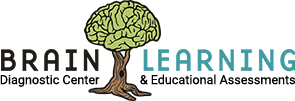Let’s face it; if you’re a child in public education and you possess cognitive or academic skills that fall outside of that “normal-range,” you’re going to struggle. In fact, the farther your cognitive or academic skills are from the “average” the more difficult school will be.
Statistical or normal distribution theory would claim that when age is controlled for 68 out of 100 children will possess cognitive skills in the “normal-range.” Those kids do well in schools. They have opportunities to grow and learn. They can even afford to make mistakes. Most of the instruction and curriculum will focus on those 68 students. Most of the graduate training that a future teacher will participate in will focus on the 68 students. Those 68 students will have the most opportunities to learn because the learning environment is designed specifically for them. For example, if a fifth grade student possess average cognitive skills, her chances of going through the year and learning what is taught to her will be pretty high. The curriculum and instruction has all been calculated to ensure that the 68 students will learn and grow. The 68 students will be able to remember appropriate amounts of information and attend to instruction with little to no extra help. If 68 out of the 100 students fair well in school, what about the other 32 students? How do the 16 students below average and the 16 students above average learn? How do they fair in school?
The farther a child’s cognitive or academic skills are from the middle of a normal distribution or better known as the “bell curve” the more difficult school will be. Regardless of which end of the bell curve a child’s cognitive skills lie, the classroom isn’t designed to properly support and educate those students. How do we instruct and guide those 32 students? Let’s start with the 16 students who possess cognitive or achievement skills above the average.
Gifted And Talented Education (GATE) programs have been marginalized and underfunded over the years. Today many GATE programs consist of some afterschool learning project, at best. In 2013 California allowed GATE funding to be decided at the local level. There isn’t consistency in program opportunities for high achieving students. The three current models in California are; special day class, part-time grouping, and cluster grouping. The current problem with the state regulations is that there isn’t any requirement for teachers to learn about the unique needs of gifted learners. There aren’t any systematic guidelines for how to create meaningful learning environments and instructional models for gifted learners. Often these students aren’t challenged or display behaviors in school which can be mislabeled or misinterpreted, despite plenty written about them in text books and research journals. The 16 students have needs that often go unaddressed. The same can be said about the 16 students who fall below the average range.
Students with cognitive and academic skills below average present with their own set of unique educational considerations. Different from the gifted learners the 16 students below the average can sometimes access special education services to help with the design of their education. However, within the regular classroom, those 16 students will have trouble learning. In 1975 public law 94-142 was enacted and required public schools to provide equal access to education for students with disabilities. It wasn’t until 22 years later (1997) that the laws required schools to “slowly integrate students with moderate and severe differences into regular school systems. In 1989 politicians were able to break down the “walls of communism” but couldn’t break down the barriers for children with disabilities for another 8 years. Through the 1980’s while personal computers were being invented, public schools were still wondering if dyslexia existed. Many of those children dropped out of school. Today, almost 40 years later those 16 students below average still struggle. With the application of technology into classrooms students below the average (as well as others) can access and take part in the learning process to a much higher and meaningful degree. Additionally, the architectural concept of “universal design” has slowly crept into public schools. However, there is still much work to be done in creating “universally designed” learning environments.
Today there is still much to do for those 32 students. Sometimes a child truly needs an individualized education, that’s it. Sometimes a child’s learning needs are so unique that simply giving the same educational prescription is just not enough. The next time you go to see your doctor with a medical concern, just think how you would feel if the doctor gave you medicine that wasn’t calculated to work for your individual needs. You wouldn’t settle on receiving an antibiotic for symptoms of head trauma, would you? Why should we settle on a generic prescription for those 32 students who don’t learn the same as the 68 “normal” students? Always demand “better” when it comes to children.
Dr. Rienzi Haytasingh

